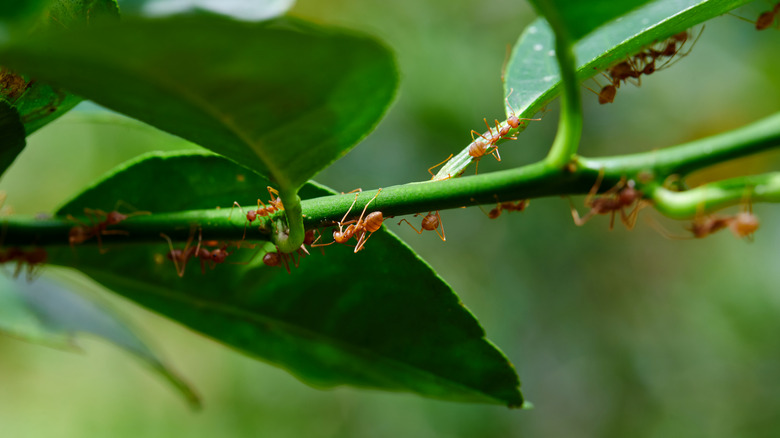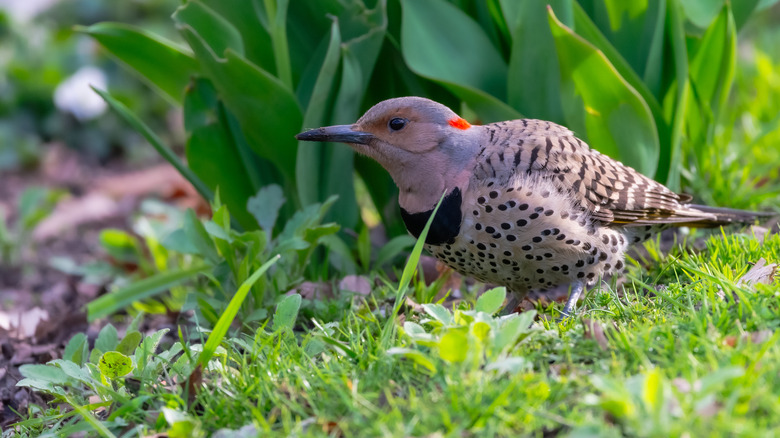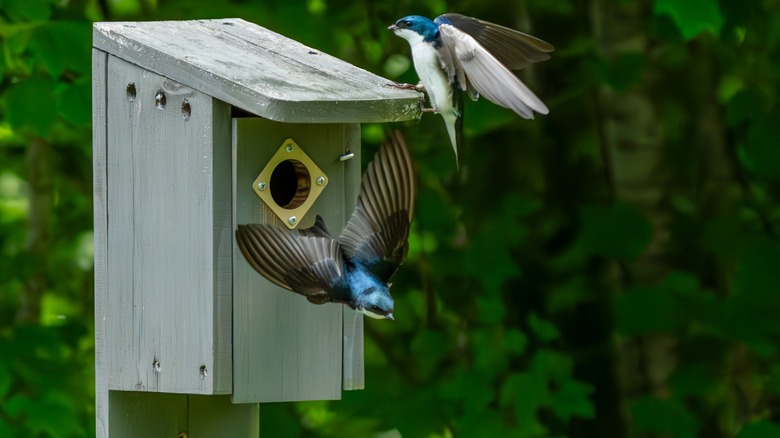Birds That'll Eat The Pesky Ants In Your Garden (& How To Attract Them)
A healthy garden should be teeming with a variety of birds, bugs, and other creatures, but sometimes you might find that one species takes over a little more than their fair share. When ants take over your yard, it can be difficult to enjoy the outdoor space, especially if you're battling with aggressive, invasive red imported fire ants (Solenopsis). No matter what species, if you can't keep ant colonies under control, they may end up infesting your garden, invading your home, or finding other ways to get under your skin. Luckily, every pest has its predator, and even aggressive ants are no exception. Insectivorous and omnivorous birds could be one of the sneaky tricks you need when dealing with ants' nests! If you're looking for birds that will help to reduce the ants in your yard, try attracting woodpeckers, hummingbirds, purple martins, and barn swallows, just to name a few.
Ant-eating birds can be a smart and sustainable solution for controlling ants in your yard, but attracting these unique bird species into your yard isn't always easy. After all, because they're insectivores, they won't display much interest in typical birdseed feeders. Here are the common birds known for dining on ants, the best birds to call in for backyard reinforcements, and tips for inviting these insectivores to your yard.
Woodpeckers hunt low while swallows aim high
Most people imagine woodpeckers clinging to the sides of trees and using their sharp beaks and long tongues to drill for insects, but the Northern flicker (Colaptes auratus) frequently hunts for prey on the ground. Woodpeckers in general tend to devour a lot of insects, but ants and beetles are the Northern flickers' favorite foods. Northern Flickers are relatively common and live year-round throughout most of North America, so they're one of the best birds to try to attract to your yard to help control ants.
Unfortunately, not every bird species will go for aggressive stinging and biting ants on the ground, but many will go for flying ants. Most ant species produce special members that will grow wings and then fly away to create their own distant colonies, known as the "nuptial flight." Because of this, airborne hunters like swifts, martins, and swallows in general are great at catching ants before they can reproduce. Purple martins, barn swallows, and chimney swifts will also feed on invasive fire ants. Another unique bird that might be of assistance, Hummingbirds are also known to catch flying ants mid-air, although ants are still one of the pests you don't want anywhere near your hummingbird feeders. If you keep a feeder to attract hummingbirds, be sure to keep it clean to avoid attracting ants to the sugary water.
How to attract these ant-eating birds
Unless you live in an area with very few trees and other natural resources, it's likely that you already have some ant-eating bird species in your area, but tempting them to come into your yard and dine on your ants can take some effort. First, determine which bird species live in your area and focus on attracting them — you're not likely to see an Eastern bluebird, for example, if you live in the western states. Because they live in a broad range across North America, it may be best to first learn how to attract woodpeckers to your yard. Northern flickers can be attracted with suet feeders, black oil sunflower seeds, and fatty nuts like peanuts, and are best served in a tray feeder or tree where the bird can perch.
Instead of feeders, swifts, martins, and swallows are usually attracted to good nesting sites. Before breeding season, install one or more nesting boxes in your yard for swallows and swifts, or a nesting gourd tree for purple martins. Be aware that many of these bird species are aggressive nest-defenders and won't cohabitate near each other, so if you already have tree swallows, for example, you may have trouble attracting and keeping purple martins. To encourage multiple species in your yard and have the best chance at ant reduction, nesting boxes need to be between 25 and 35 feet apart.


